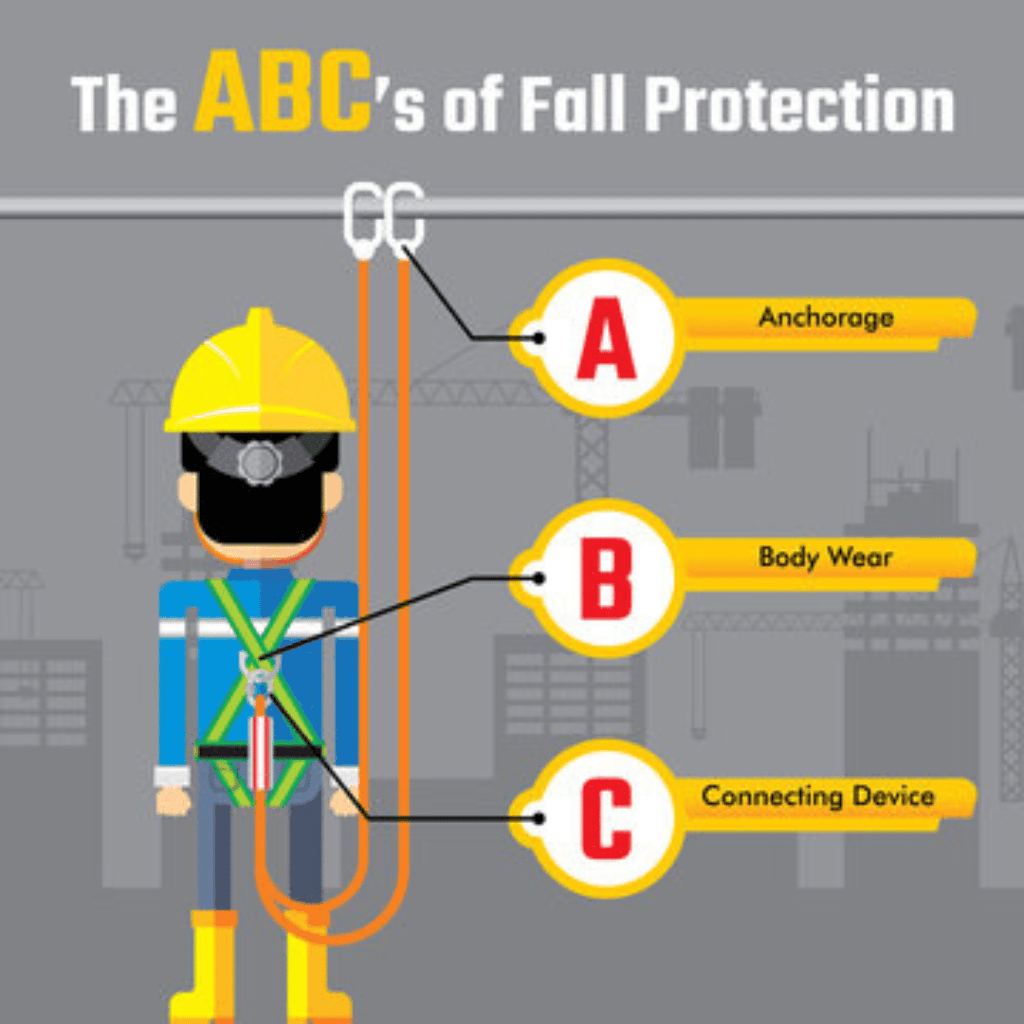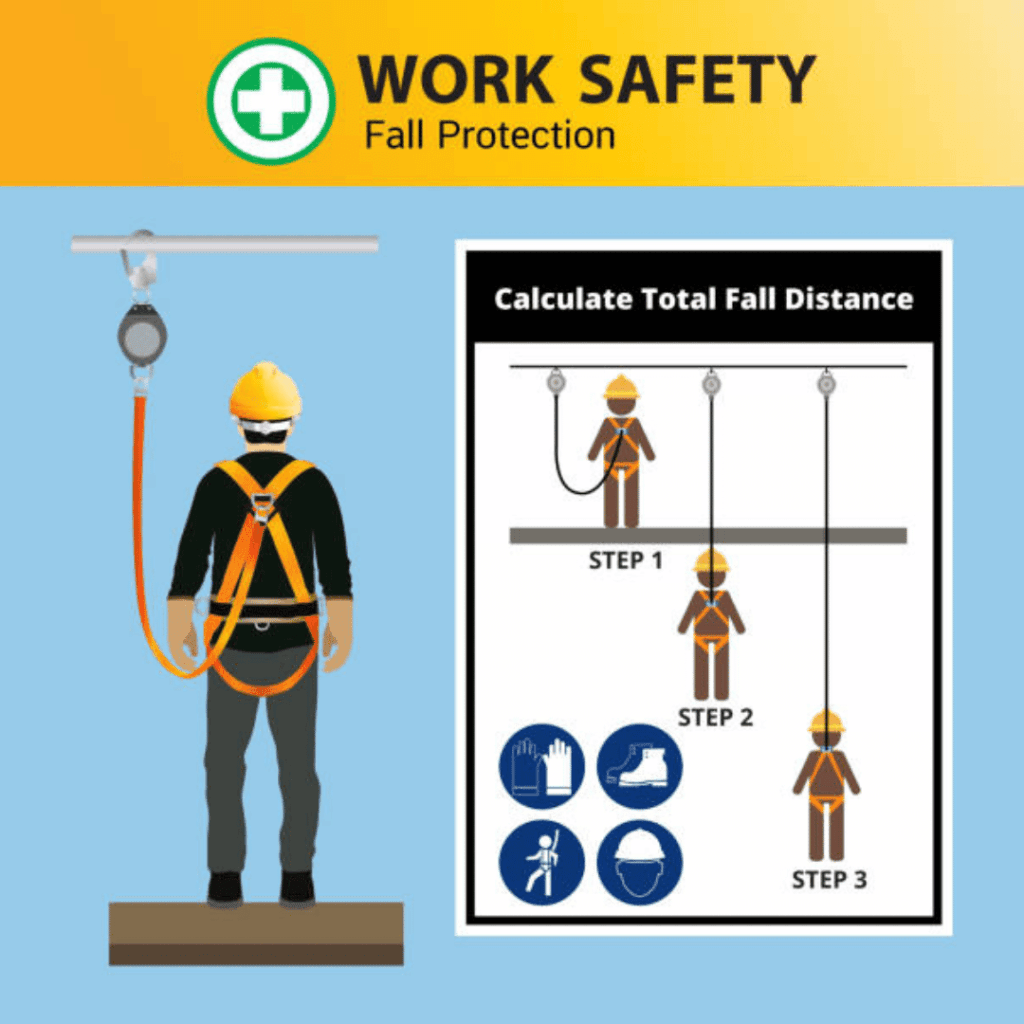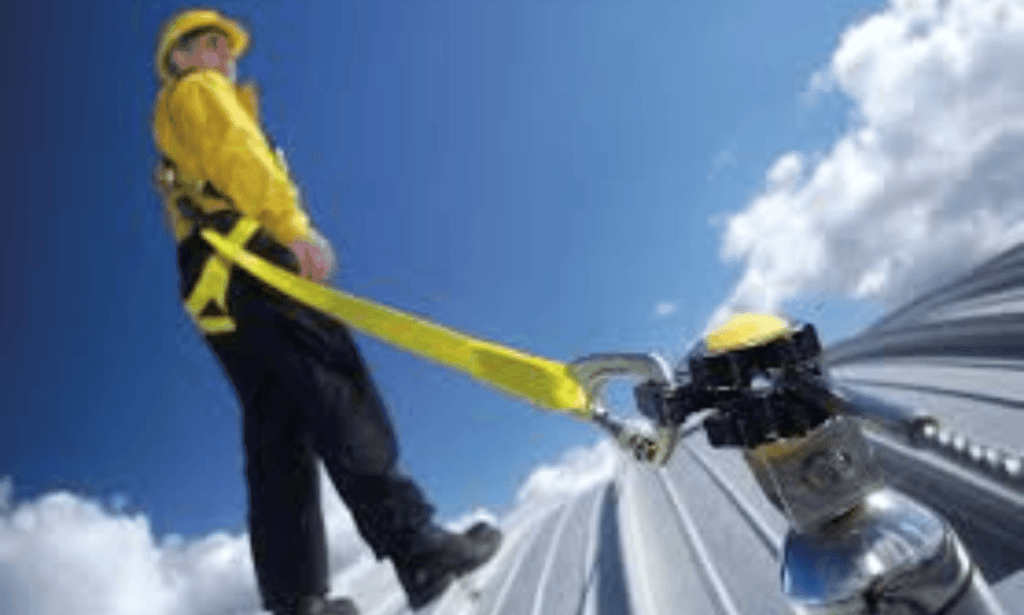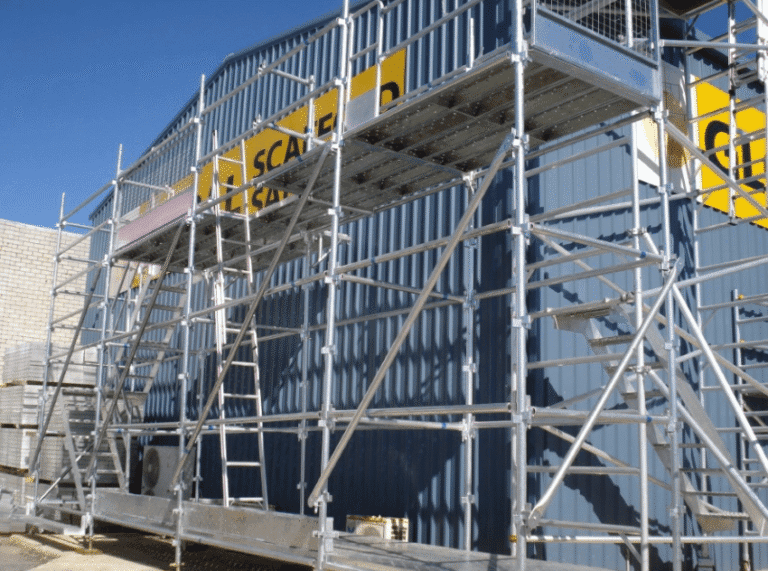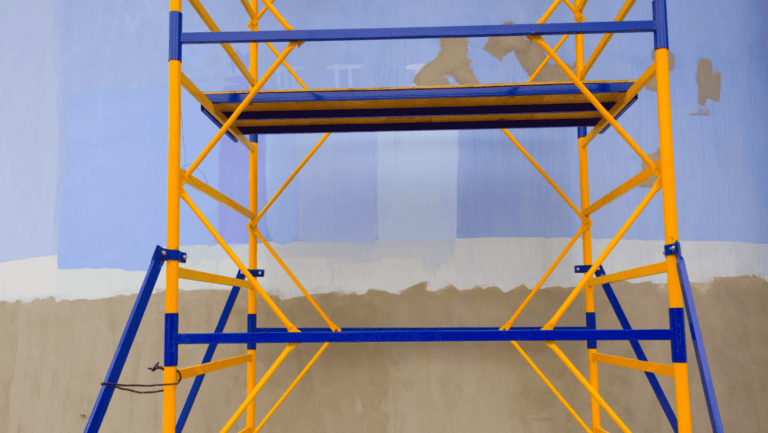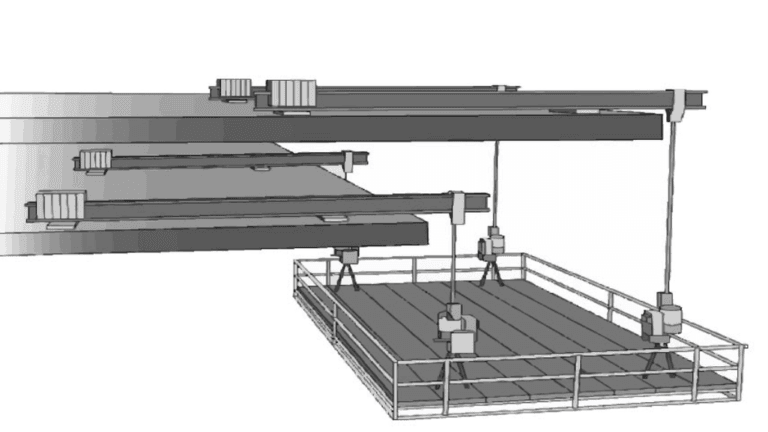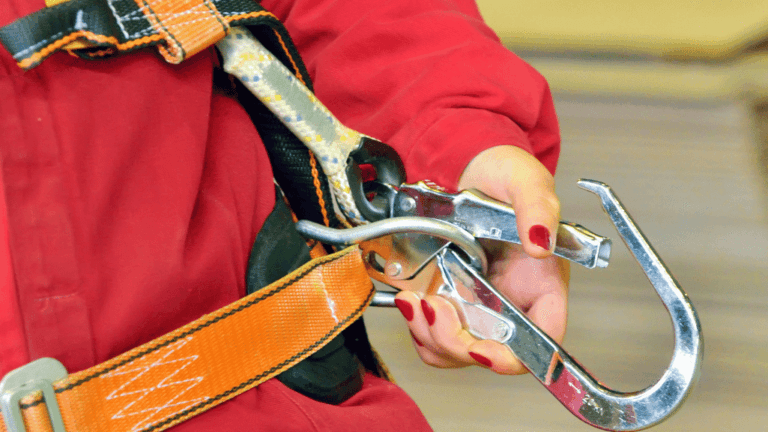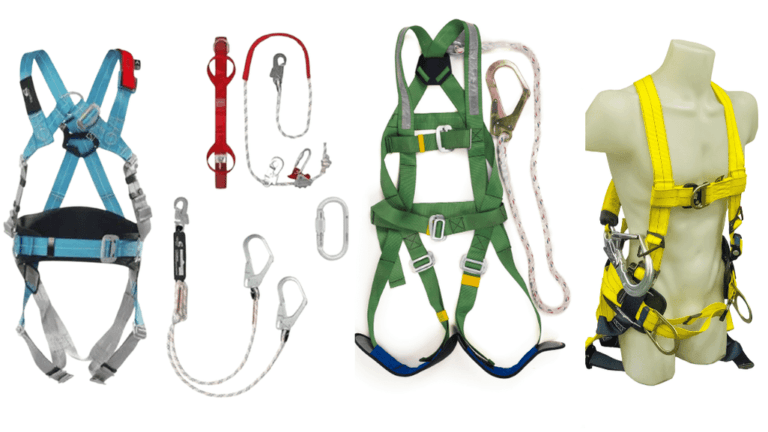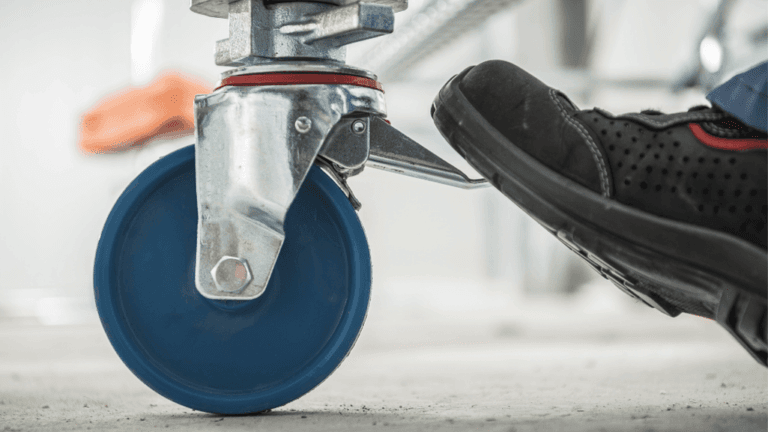Phone:
(+65)8319-0742
Fall protection is key in keeping workers safe, especially in places like construction and warehouses. The Occupational Safety and Health Administration (OSHA) says falls are the top cause of injuries in construction. They lead to 40% of injuries and 39% of deaths. Employers must use strong fall protection to keep workers safe.
Fall protection systems stop workers from falling off high places or through holes. OSHA says workers need protection at heights of 4 feet in general industry, 5 feet in shipyards, 6 feet in construction, and 8 feet in longshoring. Following these rules and using the right safety systems can greatly lower the risk of falls.
Good fall protection plans use engineering, rules, and personal protective gear (PPE). This includes guardrails, safety nets, and personal fall arrest systems. It’s also important to train workers well on safety and how to use these systems.
Putting money into fall protection saves lives and avoids big costs like lost work and legal issues. By focusing on height safety and using strong fall prevention, employers show they care about their workers’ safety.
Key Takeaways
- Fall protection is vital for preventing injuries and fatalities in industries with elevated work areas.
- OSHA recommends fall protection at various heights depending on the industry, ranging from 4 to 8 feet.
- Implementing fall prevention systems, safe work practices, and thorough training can significantly reduce workplace falls.
- Effective fall protection involves a combination of engineering controls, administrative measures, and personal protective equipment.
- Investing in fall protection safeguards workers’ lives, avoids accidents, and demonstrates a commitment to workplace safety.
Understanding the Importance of Fall Protection
Fall protection is key to keeping workers safe, especially in construction. Workers often work high up, making safety measures crucial. These measures help prevent falls, reduce injuries, and save lives.
Alarming Statistics on Workplace Falls
Workplace falls are a serious issue. OSHA says falls are the top cause of death in construction. They account for nearly 40% of all injuries and 39% of fatalities. This shows how important fall protection is.
OSHA sets height rules for fall protection. For example, it’s needed at 4 feet in general industries and 6 feet in construction. Falls as short as 10 feet can be deadly, making fall protection essential.
Consequences of Inadequate Fall Protection
Not having enough fall protection hurts workers and their families. It also hurts employers. They might face union backlash, investigations, and legal trouble. Plus, there are big financial losses, project delays, and damage to reputation.
Here’s a look at the costs:
| Consequence | Potential Cost |
|---|---|
| Workers’ Compensation Claims | $50,000 – $1,000,000+ |
| OSHA Fines | $13,653 per violation |
| Legal Settlements | Millions of dollars |
| Project Delays | Thousands to millions of dollars |
Fall protection saves lives and money. It makes work safer and more productive. A good article on fall protection shows how important it is to start with a strong safety plan.
In short, fall protection is vital. Knowing the risks and taking action helps keep workers safe. It also protects businesses from big losses.
Types of Fall Protection Systems
Fall protection systems are key to keeping workers safe at heights. They fall into two main categories: active and passive fall protection. Each type has its own benefits and works in different ways to prevent falls or lessen their impact.
Active Fall Protection
Active fall protection systems need workers to use them. They include personal fall arrest systems (PFAS), positioning device systems, and travel restraint systems. PFAS, the most common, has a harness, a lanyard, and an anchorage point. If a worker falls, PFAS stops them before they hit the ground, reducing injury risk.
Positioning device systems keep workers in a set position at heights. They use a harness or belt and a lanyard attached to an anchorage point. This prevents workers from falling more than two feet. Travel restraint systems, meanwhile, restrict worker movement with a harness and lanyard, keeping them away from hazards.
Passive Fall Protection
Passive fall protection systems don’t need workers to use them. They include guardrails, safety nets, floor covers, and warning line systems. Guardrails are barriers around elevated areas like rooftops or scaffolding. They stop workers from falling by creating a physical barrier.
Safety nets are installed below work areas to catch falling workers. They must be close enough to the work surface and strong enough to hold a worker’s weight. Floor covers and warning line systems also protect workers. Floor covers cover holes or openings, while warning lines mark areas where other fall protection is not needed.
| Active Fall Protection | Passive Fall Protection |
|---|---|
| Personal Fall Arrest Systems (PFAS) | Guardrails |
| Positioning Device Systems | Safety Nets |
| Travel Restraint Systems | Floor Covers |
| Requires worker participation | Warning Line Systems |
| Minimizes fall distance | No worker participation required |
Knowing about different fall protection systems helps employers choose the right ones for their workplaces. Using a mix of active and passive systems, along with training and maintenance, can greatly reduce fall risks. This makes workplaces safer for everyone working at heights.
OSHA Regulations and Guidelines
The Occupational Safety and Health Administration (OSHA) is key in keeping workplaces safe. They make and enforce rules to protect workers from falls. Employers need to know these rules and follow them to keep their workers safe.
Height Requirements for Fall Protection
OSHA sets rules for when fall protection is needed. In general, it’s required at 4 feet or more. But, different jobs have different rules:
- Shipyards: 5 feet
- Construction: 6 feet
- Longshoring operations: 8 feet
Employers must check their work area for fall risks. They should use man lifts and other safety gear to meet OSHA’s rules.
Industry-Specific Standards
OSHA also has rules for specific jobs. These rules help protect workers from falls in different work settings. Employers must follow these rules to keep their workers safe.
| Industry | OSHA Standards |
|---|---|
| Construction | 29 CFR 1926 Subpart M |
| General Industry | 29 CFR 1910 Subpart D |
| Shipyard Employment | 29 CFR 1915 Subpart E |
| Longshoring | 29 CFR 1918 Subpart D |
In construction, for example, employers must follow specific rules. These rules cover scaffolds, cranes, and more. They help prevent falls by setting standards for safety gear and training.
By following OSHA’s rules, employers can make their workplaces safer. This helps prevent falls and keeps workers safe from serious injuries. It’s important to keep safety programs up to date to stay safe.
Developing a Comprehensive Fall Protection Program
To tackle the risks of falls at work, creating a detailed fall protection program is key. This program should include training, hazard assessments, and a clear plan for protection.
For a program to work, management must be committed, and employees must be involved. Training on fall prevention is vital. It teaches workers about dangers and how to use safety gear. Training should happen often, especially when new gear or methods are introduced.
“Falls are among the most common causes of serious work-related injuries and deaths. Employers must set up the workplace to prevent employees from falling off of overhead platforms, elevated work stations, or into holes in the floor and walls.” – Occupational Safety and Health Administration (OSHA)
Another important step is a thorough fall hazard assessment. This looks at risks like working at heights, ladder use, and open edges. With this info, a detailed plan can be made to tackle each risk.
The plan should list steps to stop falls, like using guardrails or safety nets. It should also cover how to check and keep safety gear in good shape. Plus, it should outline what to do in case of a fall.
It’s important to check the program often. These checks help see if the program is working, find ways to get better, and update it as needed. This keeps the program effective and up-to-date.
With a solid fall protection program, employers can greatly lower the risk of falls at work. This includes training, hazard checks, and a clear plan for safety.
Fall Protection Hierarchy
The fall protection hierarchy is a way to lower fall risks at work. It uses a step-by-step approach to find the best ways to protect workers. This method helps companies pick the right safety steps to prevent falls and keep workers safe.
Elimination or Substitution
The best way to protect against falls is to remove the hazard. This means changing designs or processes to avoid heights. For example, a factory might use robots or move work to the ground to avoid falls.
If removing the hazard isn’t possible, finding safer alternatives is the next best step.
Passive Fall Protection Measures
Passive systems like guardrails and safety nets protect workers without needing them to do anything. These systems are very good at stopping falls. Guardrails and safety nets are especially useful in places where falls could happen.
Using these systems is key to keeping a workplace safe, as shown in this article on occupational health and safety.
Fall Restraint Systems
Fall restraint systems keep workers from getting too close to hazards. They use a harness and anchor point to limit movement. This is great for areas where falls could happen, like near edges or on high platforms.
These systems work by stopping workers from reaching dangerous spots.
Fall Arrest Systems
When other methods can’t stop falls, fall arrest systems are used. These systems, like personal fall arrest systems (PFAS) and safety nets, catch workers if they fall. PFAS have a harness, lanyard, and anchor point to stop falls and spread out the force.
Safety nets are another passive way to catch falls, often used in construction.
Administrative Controls
Administrative controls are less effective but still important. They include training, rules, and signs to teach workers about safety. Training on how to use safety gear and recognizing hazards is crucial.
Rules like wearing safety gear or limiting time at heights also help. But, these controls depend on workers following them and should be used with other safety steps.
| Fall Protection Measure | Effectiveness | Examples |
|---|---|---|
| Elimination or Substitution | Most effective | Automated systems, relocating work to ground level |
| Passive Fall Protection | Highly effective | Guardrails, safety nets, covers |
| Fall Restraint Systems | Effective | Travel restraint, positioning systems |
| Fall Arrest Systems | Effective, but allows fall to occur | Personal fall arrest systems (PFAS), safety nets |
| Administrative Controls | Least effective, relies on worker compliance | Training, work procedures, warning signs |
Understanding and using the fall protection hierarchy helps make workplaces safer. It’s important to choose the right safety steps for each workplace. Regular training and following safety rules are also key to keeping workers safe.
Essential Fall Protection Equipment
To keep workers safe, employers need to give them fall protection equipment. This includes personal fall arrest systems, guardrails, safety nets, and strong anchorage points. Using the right gear for each job can greatly lower the risk of falls and injuries.
Personal Fall Arrest Systems (PFAS)
Personal fall arrest systems (PFAS) are key for safety. They have a body harness, anchorage, and connectors like lanyards or lifelines. If someone falls, the PFAS catches them, spreading the force safely and reducing injury risk.
OSHA says to use fall arrest systems for anyone working over six feet high. This helps prevent injuries from falls.
Guardrails and Safety Nets
Guardrails and safety nets offer passive protection. Guardrails have a top rail, midrail, and toeboard, all strong enough to withstand certain forces. In construction, they protect workers on ramps and walkways from falls over six feet.
Safety nets catch falling workers when other methods can’t be used. They’re a last defense against falls.
Anchorage Points and Connectors
Anchorage points are vital for attaching fall protection devices. They must hold the needed loads and be placed to reduce fall risks. Connectors, like carabiners and snap hooks, link the harness to the anchorage or lanyard.
It’s important that connectors match the anchorage and fall protection system. This ensures safety.
| Industry | Height Requirement for Fall Protection |
|---|---|
| Construction | 6 feet |
| General Industrial | 4 feet |
| Longshoring | 8 feet |
| Shipyards | 5 feet |
| Scaffolding | 10 feet |
Fall protection gear is a must in many industries, with OSHA setting height rules. The table shows the height limits for fall protection in different fields. Employers must provide the right equipment for workers at or above these heights. This keeps the workplace safe and follows OSHA rules.
In General Fall Protection Must Be Provided
Keeping workers safe from falls is a big job for employers, especially in construction. Falls are a major cause of injuries and deaths at work. Employers must provide fall protection to workers at risk, with rules changing based on the job and height.
Identifying High-Risk Areas
Finding areas where falls are likely is the first step in keeping workers safe. These spots include:
- Unprotected edges
- Open holes
- Elevated work platforms
- Rooftops
- Scaffolding
- Ladders
Employers need to check their work sites carefully. They should find and fix fall hazards and pick the right protection for each area.
Implementing Appropriate Fall Protection Measures
After finding risky areas, employers must choose the right fall protection. The fall protection hierarchy helps pick the best options:
- Eliminate or change fall hazards
- Use passive protection like guardrails
- Fall restraint systems
- Fall arrest systems
- Use rules and training
Choosing the right protection depends on knowing the work area well. For example, guardrails work well but might not be enough for steep roofs.
Employers must also make sure the protection is set up right and workers know how to use it. They should train workers and check the equipment often to keep it safe.
| Industry | Height Requirement for Fall Protection |
|---|---|
| General Industry | 4 feet or more |
| Construction | 6 feet or more |
| Fixed Ladders | 24 feet or more (climb length) |
By carefully checking for fall risks, picking the right protection, and making sure it’s used right, employers can make their workplaces safer. This helps prevent falls and keeps workers safe.
Employee Training and Education
Training and education are key parts of a good fall protection program. It should teach about fall hazards, how to use safety gear, and safe work habits. This knowledge helps employees stay safe when working at heights, lowering injury and death risks.
Training should fit the workplace and its people. OSHA says training must come from someone who knows a lot about fall dangers. Employers can pick how to train, like classes, videos, or computer lessons. It’s important to keep everyone involved and encourage questions to build a safety culture.
Getting workers involved in safety plans makes them more effective. Asking for their input helps find and fix problems. This teamwork makes safety better and makes workers feel more responsible.
When picking safety gear, like metal scaffolding, involve your team. This ensures the gear fits the job and is easy to use.
Training should keep going. Update training when skills drop, unsafe habits show up, or the job changes. This keeps the workplace safe and shows you care about your team.


